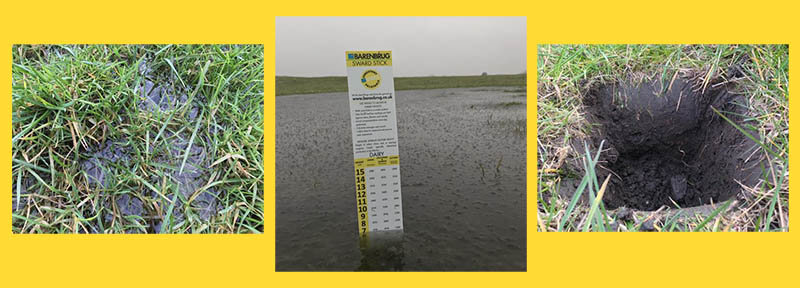Farming advice after wet weather
Farming Advice | Forage

Farming Advice | Forage
Livestock farmers across the UK should get to grips with soil sampling over the next four to six weeks to tackle any issues that might be lurking, undetected, beneath the surface - such as compaction. That’s the advice from the forage grass team at Barenbrug UK, following a soggy second half to 2017 across some parts of the UK and a wet start to 2018.
Overall the UK saw slightly less rainfall than average during 2017, according to Met Office figures - but in many parts of the country it didn’t feel that way. After a very dry spring, some areas saw almost all of the year’s rainfall in just a few months, with worst affected areas including South West Scotland, Orkney, Aberdeenshire, North West England and West Wales.
For many farmers, the heavy rain had an obvious effect on grassland management – interfering with silage cutting and collection, and causing problems with feed reserves. But Barenbrug believes the wet weather may have left some farmers with other unseen issues, including compaction, which could affect 2018 grass yields if uncorrected.
Mhairi Dawson, Research & Development Manager at Barenbrug UK said; “The impact of prolonged periods of rain on soil structure should not be underestimated. Just one inch of water, across one acre of land, equates to around 22,000 gallons of water, and weighs approximately 100 tonnes. This additional weight can lead to compaction, which in turn leads to other issues. Short-term, compaction can reduce the carrying capacity of land for livestock or vehicles. Long-term, it can lead to poor soil health and a loss of productivity of between 10 to 20%. Compaction means less air and water movement through soil, which causes poor fertiliser uptake, more nutrient leaching, and reduced soil biology.
Crucially, compacted soil will also be colder – leading to delayed germination and root development, fewer growing days, reduced grazing opportunities and lower silage yields.”
Barenbrug’s advice to farmers who suspect a case of compaction is simple: Get out and check fields early - before the bulk of spring work occurs - and then fix the problem as quickly as possible.
Continuing Mhairi said: “Now is an excellent time to walk the farm and identify areas where soil might be compacted. Water collecting in fields and remaining for longer than normal is a sure sign - as is patchy areas of growth. If you suspect a case of compaction, there’s little point doing anything else until you’ve solved the issue at its root. To correct compaction of just one to two inches, a sward slitter will suffice. Down to six to eight inches you’ll need to use a sward lifter to aerate the soil. Once this is done, you can start thinking about other ground works, adding nutrients and planning any reseeding ahead of the main grass growing season. Most farmers soil sample every three to four years.
With extremely wet weather becoming a regular occurrence in many parts of the country, especially along the west coast of the UK and in Northern Ireland, checking fields more regularly is going to have to become standard farming farming practice.”
Further hints and tips on managing your grassland for success are available in the Barenbrug Good Grass Guide. This free booklet features essential information for UK farmers. It includes a guide to condition scoring grass plus ample recording pages for note taking.


Download the Good Grass Guide - the simple pasture management guide